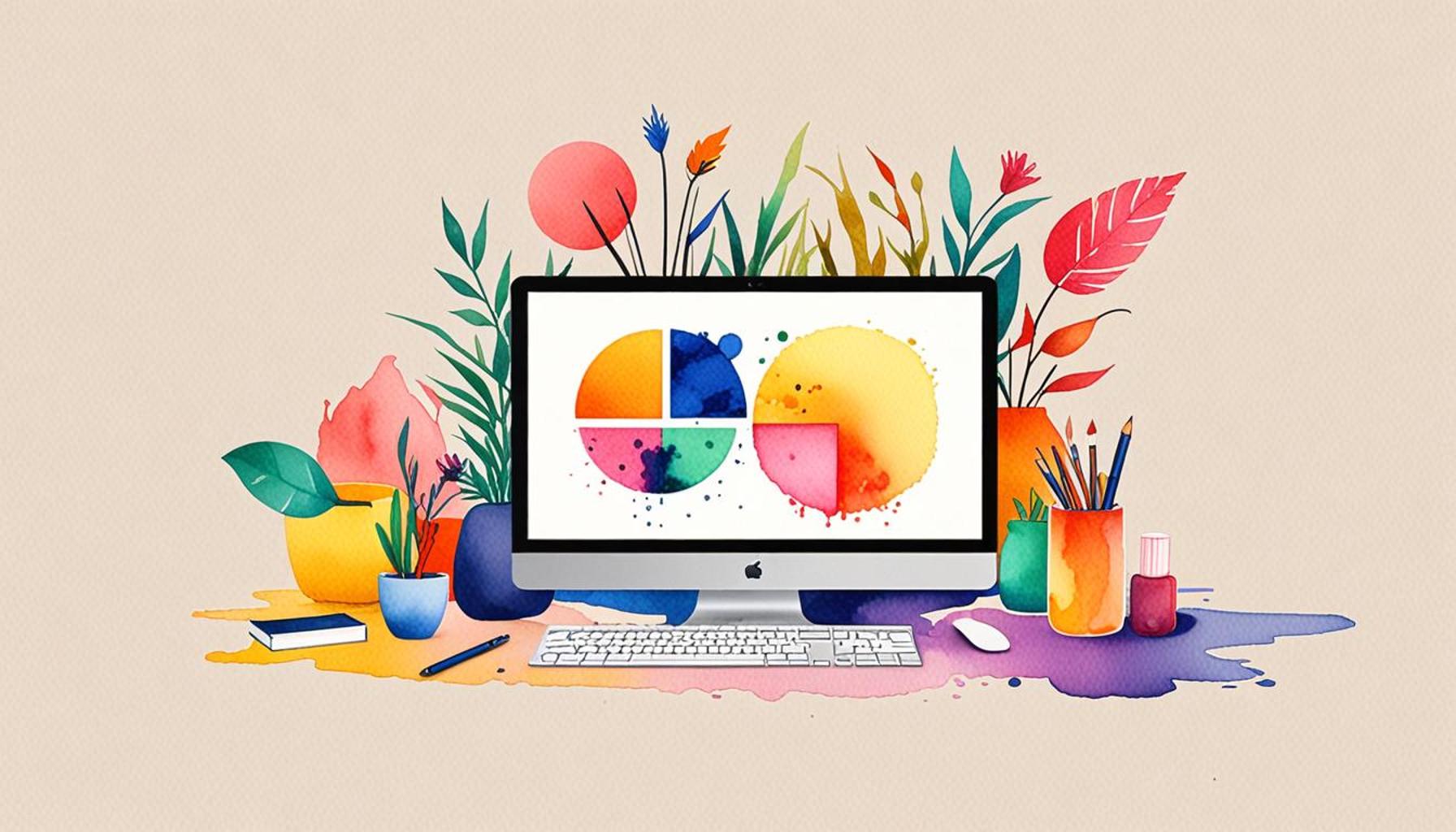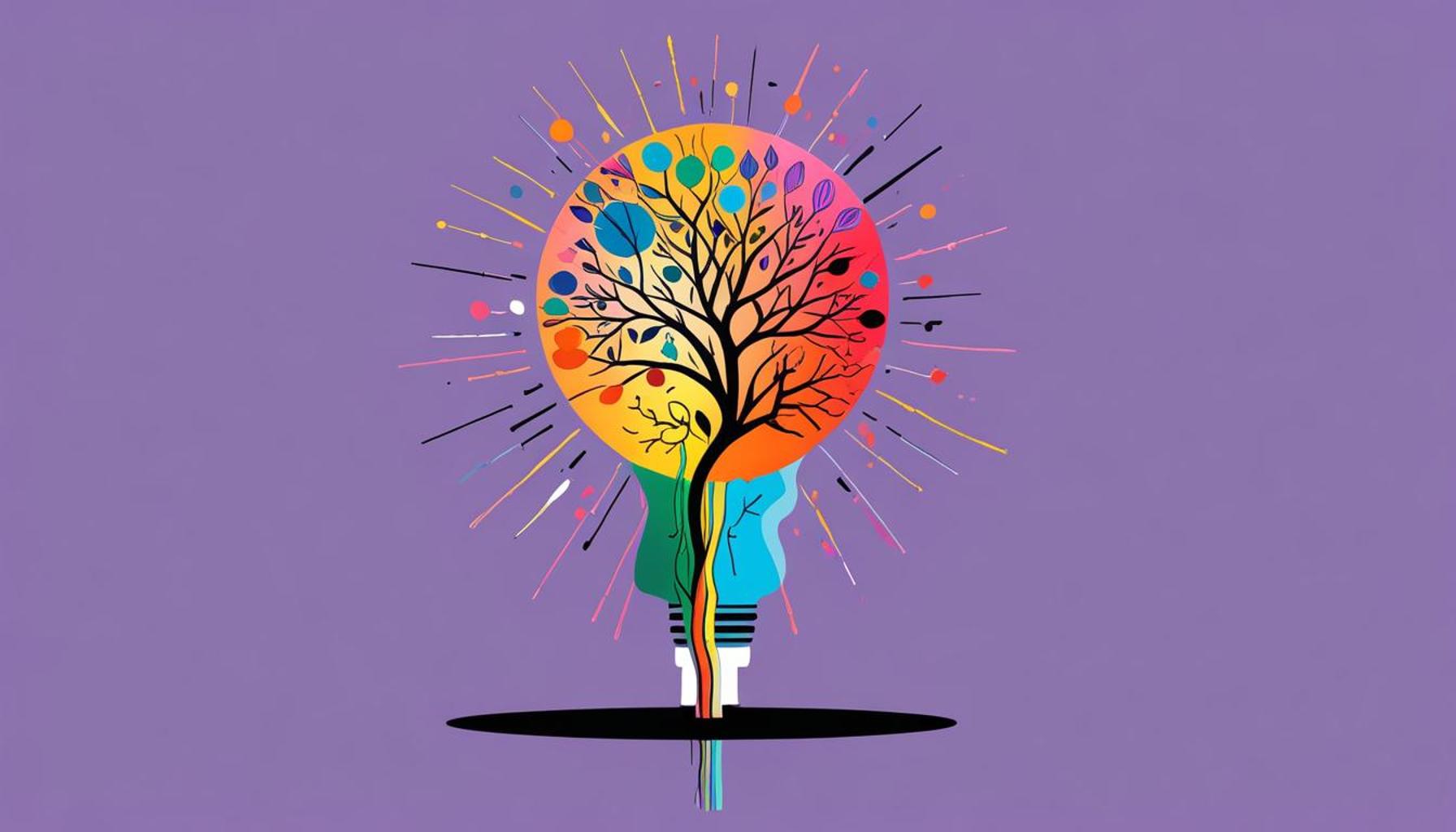Digital Minimalism: Cultivating an Intentional Lifestyle in the Information Age

Understanding Digital Minimalism
In today’s fast-paced digital world, the overwhelming influx of information can feel suffocating. With smartphones, social media, and constant notifications, many individuals are seeking a way to reclaim their sanity and focus. Enter digital minimalism, a lifestyle choice aimed at reducing digital clutter and enhancing one’s overall well-being.
What is Digital Minimalism?
Digital minimalism revolves around the belief that less is more. It encourages us to be intentional with our technology use by focusing on what truly adds value to our lives. This concept is particularly relevant in a time when technology pervades our everyday activities, shaping not just how we communicate but also how we think and feel. Here are key principles that define this concept:
- Intentionality: Use technology deliberately to support your goals. For instance, rather than mindlessly scrolling through social media feeds, one might set specific times for engaging with content that aligns with personal growth or hobbies.
- Focus: Eliminate distractions that derail productivity. This might involve muting notifications during working hours or designating tech-free zones in the home to foster deeper connections with family and friends.
- Quality over Quantity: Choose high-quality interactions over numerous superficial connections. Prioritizing face-to-face conversations or meaningful online discussions can create more fulfilling relationships.
This approach addresses the growing concern over digital addiction and information overload, which can lead to anxiety and dissatisfaction. In the United States, surveys indicate that the average adult spends over 11 hours per day interacting with media. This statistic raises pressing questions:
- Are we finding joy in our digital interactions?
- How many of these activities contribute positively to our lives?
- Can we create boundaries to enhance our mental health?
As we delve deeper into this topic, it’s crucial to acknowledge the psychological ramifications of our digital habits. Studies have shown that excessive screen time is linked to increased feelings of loneliness and depression. The need to constantly check our devices can create a cycle of anxiety, depriving us of moments of tranquility and self-reflection.
For those compelled to explore a digital minimalist lifestyle, practical strategies are available to guide this transformation. These can range from curating one’s device applications to include only those that provide real joy or utility, to implementing ‘digital detox’ weekends, away from screens and technology. Embracing practices like mindfulness or journaling can offer insights on what truly matters.

With the potential to radically change our relationship with technology, digital minimalism invites us to discover a pathway to a more intentional existence in the information age. As we journey through this exploration, we will unveil not only the challenges but also the rewards that come from living wisely in a digitally saturated world.
DISCOVER MORE: Click here to uncover what truly matters
Exploring the Benefits of Digital Minimalism
As the digital landscape continues to evolve, the move towards digital minimalism symbolizes a pivotal shift in how we interact with technology and, ultimately, ourselves. By embracing a more intentional approach, individuals can unlock numerous benefits that extend beyond simply reducing screen time. The essence of digital minimalism lies in enhancing our quality of life and fostering meaningful connections.
The Psychological Benefits
One of the most profound advantages of adopting a digital minimalist approach is the positive impact on mental health. Research has linked excessive technology use to a variety of psychological issues, including anxiety, depression, and increased stress levels. By intentionally limiting digital engagement, individuals report experiencing a notable reduction in feelings of overwhelm and distraction.
Moreover, engaging in less screen time can encourage more mindfulness—a critical component of emotional and psychological well-being. Studies suggest that mindful practices, such as meditation and reflection, can lead to improved emotional regulation, resulting in a greater sense of stability and calm. Digital minimalism provides the perfect framework for cultivating these practices by creating space for personal reflection and mental clarity.
Reinforcing Real-Life Connections
Digital minimalism also emphasizes quality interactions over mere quantity. In a world where social media likes and shares often define connections, prioritizing meaningful relationships is crucial. This focus can lead to deeper, more authentic bonds with friends and family. Reducing time spent on digital communication can free up time for in-person conversations, fostering intimacy and understanding.
Consider the following strategies to enhance real-life connections:
- Scheduling Face-to-Face Meetings: Instead of relying solely on texts or emails, aim to arrange in-person gatherings.
- Participating in Community Activities: Engage in local events that enable interaction with others, building a more connected social network.
- Limiting Social Media Usage: Set boundaries around social media time to encourage more genuine connections outside of the digital space.
Time Management and Productivity
Beyond mental health and interpersonal relationships, digital minimalism can significantly enhance productivity and time management. The constant barrage of notifications can fracture our focus, leading to diminished output. By applying minimalist principles, individuals can structure their technology use to support their productivity goals rather than hinder them.
Implementing simple strategies, such as using productivity apps that align with your values or adopting timers for focused work sessions, can streamline tasks and cultivate an environment that promotes efficiency. As a result, digital minimalism can help reclaim precious time that may have been lost to incessant scrolling and digital distractions.
In the quest for a more intentional lifestyle in the information age, understanding the myriad benefits of digital minimalism is essential. From enhancing mental health to fostering authentic connections and improving productivity, the journey towards cultivating a meaningful relationship with technology is both rewarding and transformative. By embracing this lifestyle, we can consciously navigate the digital realm, curating an experience that elevates rather than detracts from our quality of life.
| Advantage | Description |
|---|---|
| Enhanced Focus | Digital minimalism encourages reducing distractions, leading to improved concentration on essential tasks and projects. |
| Increased Well-being | By prioritizing meaningful interactions and disconnecting from unnecessary technology, individuals experience a boost in mental health and overall happiness. |
In an age where information is abundant and distractions are limitless, the practices of digital minimalism shine as a beacon of clarity. One primary advantage is its capacity to foster enhanced focus. By intentionally choosing to limit digital interactions, individuals can redirect their energy toward more rewarding and productive activities. For example, studies show that reducing social media consumption can lead to a more profound engagement with hobbies, work, and relationships.Another critical benefit is the increased well-being reported by digital minimalists. Emphasizing quality over quantity in our digital consumption can significantly improve mental health. Instead of feeling overwhelmed by a constant barrage of notifications and updates, individuals learn to cultivate meaningful relationships. This intentional lifestyle choice not only uplifts spirits but also promotes a healthier, more balanced approach to technology. Exploring these benefits of digital minimalism may spark a desire for transformation in how individuals interact with their digital environments.
DISCOVER MORE: Click here to learn how digital organization tools can enhance your minimalist lifestyle
Embracing Digital Detox Strategies
As individuals embark on their journeys toward digital minimalism, adopting effective detox strategies can be a game-changer. A digital detox involves consciously stepping away from technology to regain control over one’s time and attention. This process helps individuals reconnect with the present moment, cultivating a deeper appreciation for offline experiences.
Designating Tech-Free Zones
Creating tech-free zones in your home can significantly enhance your digital detox experience. For instance, transforming your bedroom into a sanctuary devoid of screens can improve sleep quality and overall well-being. The National Sleep Foundation highlights a strong correlation between late-night screen time and sleep disturbances. By fostering environments that encourage relaxation without digital distractions, individuals can rejuvenate both mind and body.
Furthermore, consider establishing family meal times where devices are put away. Research from the American Psychological Association underscores that shared meals foster greater family cohesion and communication, reinforcing bonds and encouraging valuable conversations.
Implementing the Pomodoro Technique
For those struggling with productivity, the Pomodoro Technique offers a structured approach that promotes efficiency while minimizing distractions. This method involves working in focused sprints of 25 minutes, followed by a brief five-minute break. During these time blocks, it’s essential to eliminate digital disruptions by silencing notifications or utilizing focus apps to limit distractions.
After four sprints, a longer break of 15 to 30 minutes allows for rejuvenation. This technique not only enhances productivity but also fosters a mindful focus on the task at hand, combating the effects of digital overload. Empirical studies suggest that implementing this method can significantly improve task completion and engagement levels.
The Role of Digital Decluttering
In addition to detox strategies, digital decluttering is crucial for creating a streamlined digital environment. This process involves purging unnecessary apps, files, and subscriptions that only add to the noise of everyday life. A 2022 report by the Pew Research Center found that nearly 60% of Americans felt overwhelmed by the digital clutter in their lives, indicating a widespread need for intentional digital organization.
Start by assessing the apps on your devices. Ask yourself if each app serves a meaningful purpose in your life or if it merely contributes to feelings of distraction. Regularly reviewing and deleting what is no longer needed can create a digital space that promotes clarity and intention.
Balancing Information Intake
As information overload becomes a pervasive issue in the digital age, balancing the consumption of content is critical to sustaining a minimalist approach. Instead of mindlessly scrolling through social media feeds or news apps, consider curating a select list of trusted sources for information. Subscribing to newsletters or podcasts that align with your interests can offer a more enriching and focused approach to information consumption.
Furthermore, practicing the art of reading physical books or engaging in offline hobbies can offer a welcome respite from the incessant influx of digital information. According to the 2021 National Endowment for the Arts report, individuals who regularly engage in reading experience increased creativity and cognitive function, showcasing the benefits of redirecting focus to non-digital activities.
Incorporating these detox strategies, decluttering methods, and balanced information practices can deepen individuals’ engagement with the principles of digital minimalism. By intentionally navigating the complex landscape of the modern digital world, individuals can propel themselves toward a more fulfilled and meaningful existence.
DISCOVER MORE: Click here to learn about digital minimalism
Conclusion: Navigating the Digital Landscape with Intent
As we traverse through the information age, the principles of digital minimalism emerge as essential tools for reclaiming autonomy over our lives. The strategies explored throughout this article—embracing digital detoxes, setting tech-free environments, and engaging in purposeful consumption of information—encourage a deeper connection to both ourselves and our surroundings. With the ongoing rise in screen time and digital distractions, acknowledging their impact on mental health and social cohesion is becoming increasingly vital.
This shift towards intentional living not only fosters individual well-being but also nurtures stronger relationships. By prioritizing technology’s role in our lives, we can make informed decisions about its usage that aligns with our values. Creating moments of disconnection allows us to savor the richness of face-to-face interactions, leisure activities, and personal reflection—elements essential for holistic living in a hyper-connected world.
The findings from reputable sources underline the urgent need to address digital clutter and information overload, further emphasizing that our digital choices shape our mental landscapes. In this journey toward digital minimalism, it’s crucial to remain vigilant and adaptable, constantly reassessing our relationship with technology. Adopting a lifestyle rooted in intention empowers us to thrive amid the noise, enabling a more fulfilling existence that embraces the beauty of the present moment. As you consider embarking on your path to digital minimalism, ask yourself: what can you eliminate to create space for what truly matters in your life?


